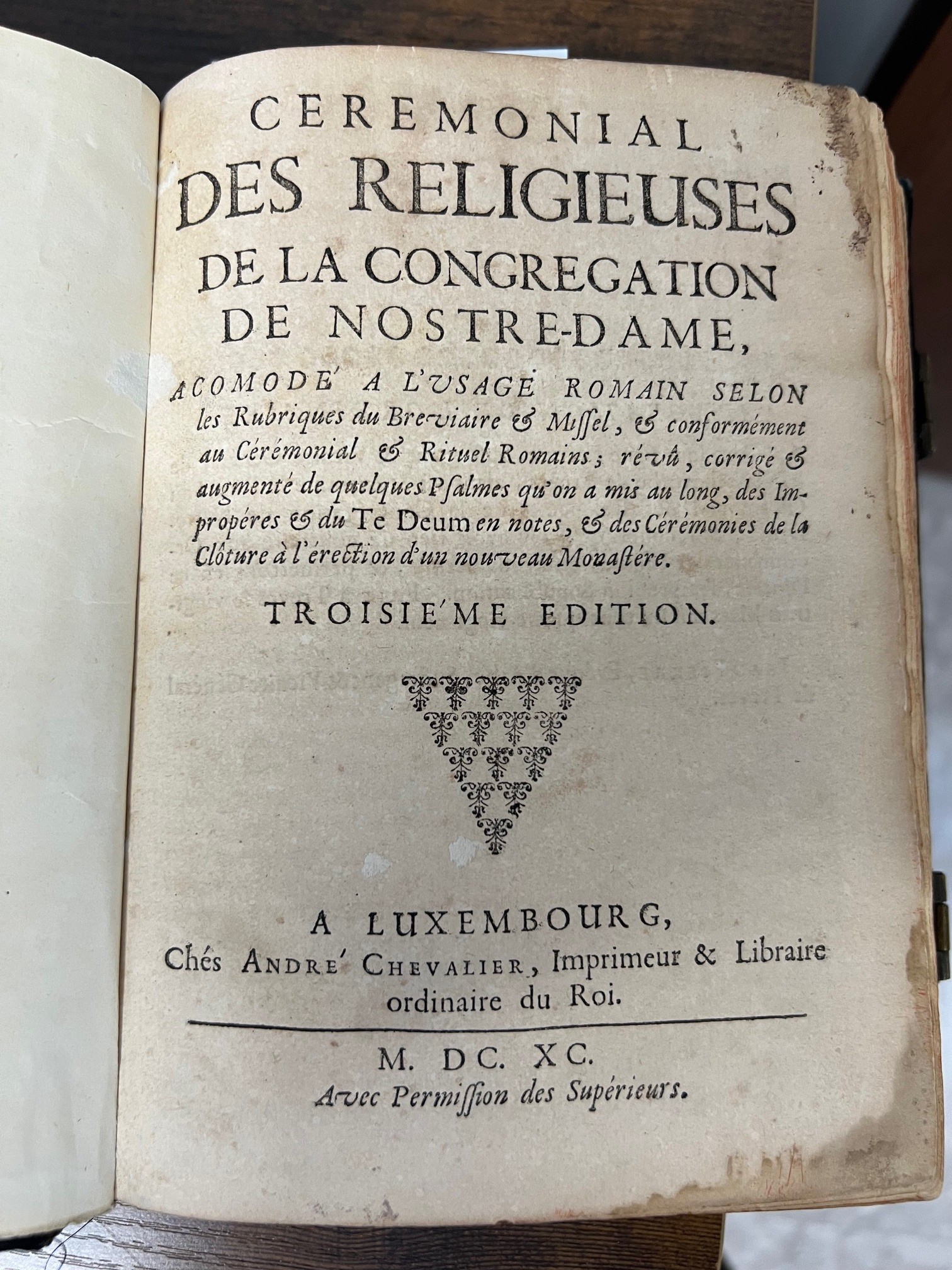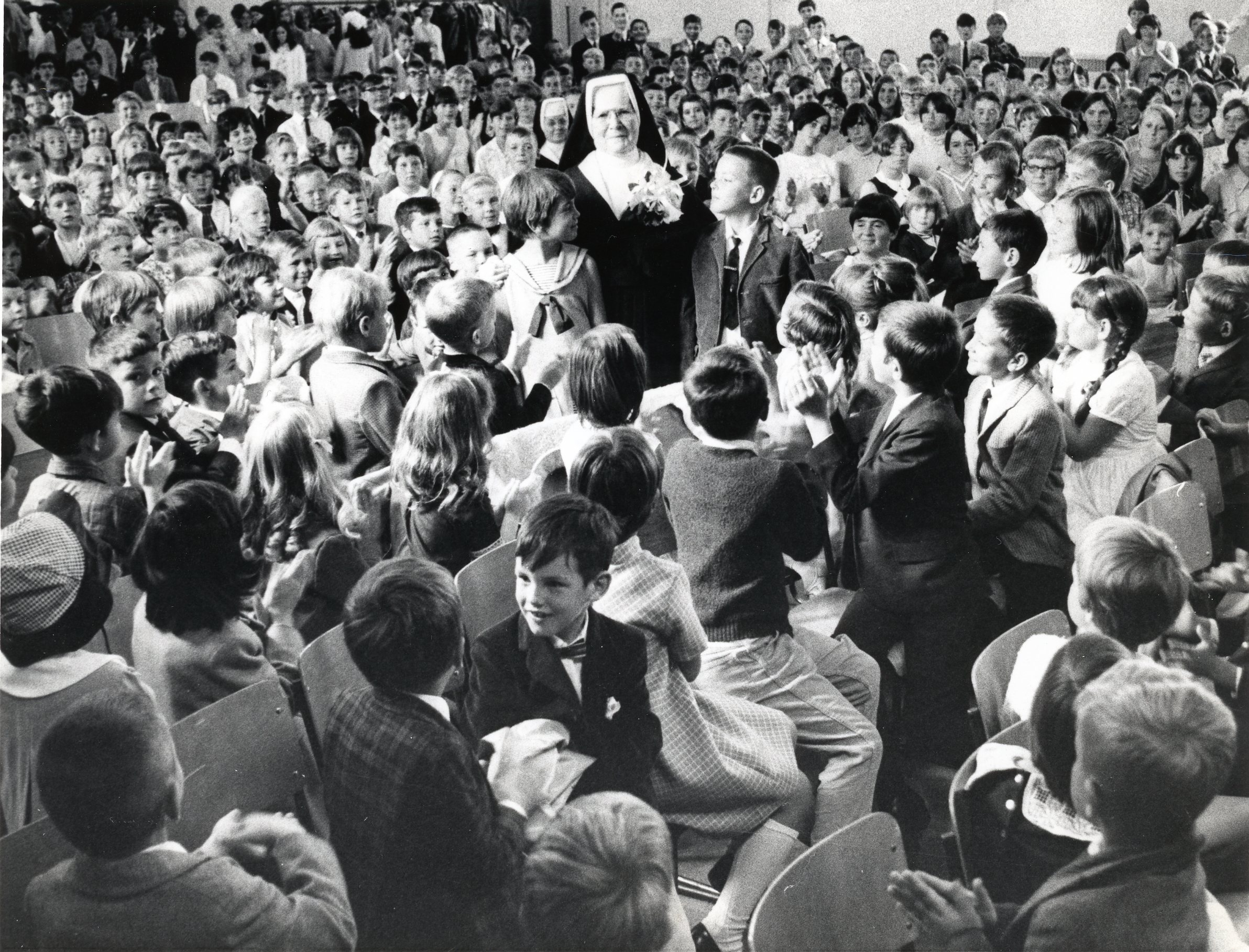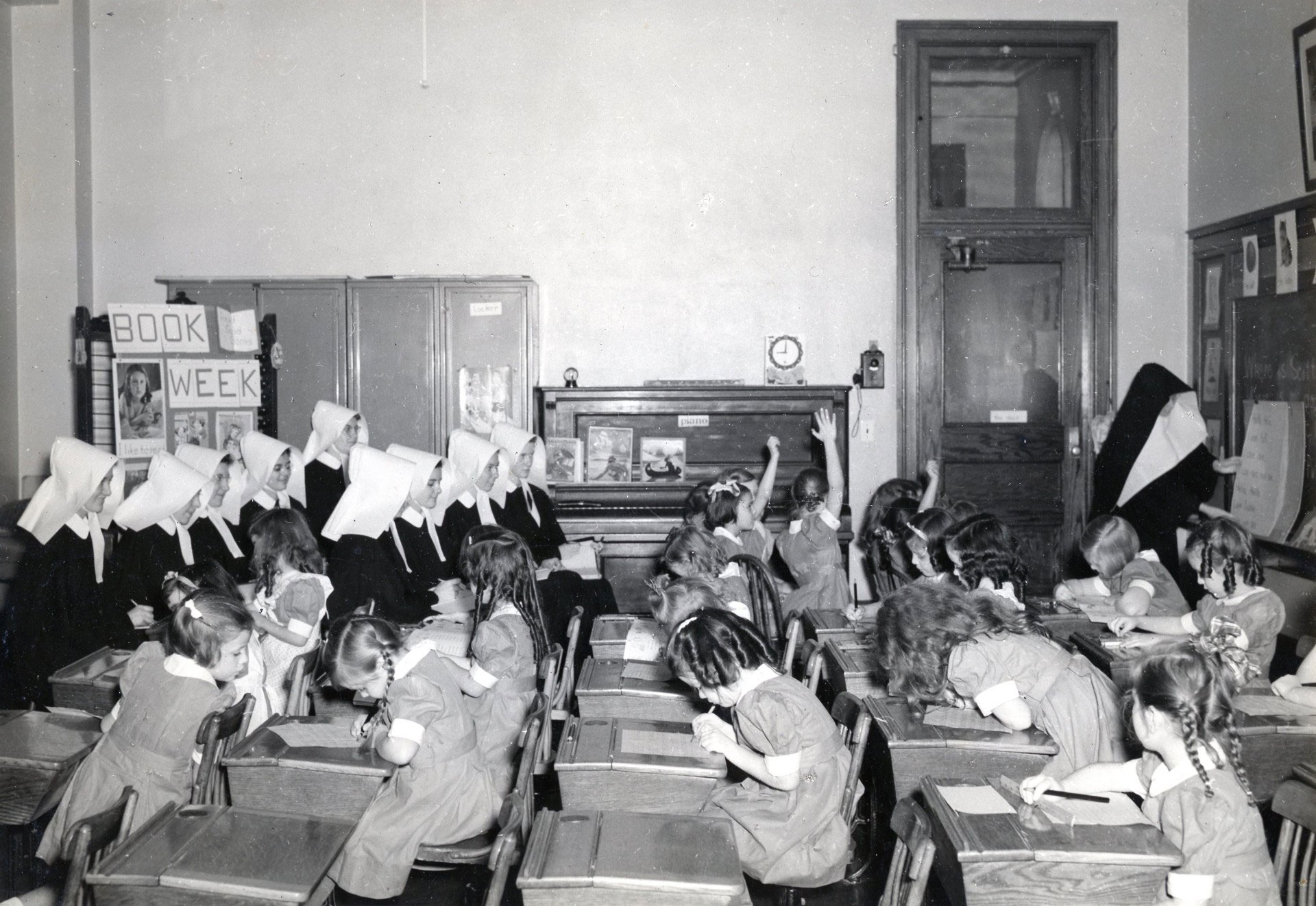Although the SSND North American Archives (NAA) is a treasure trove of objects and information from the congregation’s rich history, many people don’t know much about what it contains or how the people who work there spend their days. To learn more, we asked NAA staff members about the work they do as archivists and the collection they maintain. Here is what we learned:

This book is the oldest item in the NAA collection.
Can you describe a few of the most unique or surprising pieces in the SSND NAA collection?
“A ceremonial book printed in 1690, which was used by the Congrégation Notre-Dame founded by St. Peter Fourier and Alix LeClerc, and therefore by the School Sisters of Notre Dame until our rule was first approved in 1859. It also contains the words and music for the “Suscipe” that was sung during profession ceremonies before You Are Sent and sometimes at jubilee celebrations today.” – Sr. Mary Ann Kuttner
“This is not the most unique or surprising, but it’s one of the items that I get asked about the most – “What is that yellow lion on the shelf?” I visited Sister Clara Beall in Baltimore in February 2020. Sister Clara, then 86 years old, made dolls for children being held in detention centers on the border. She gave me the lion for my son, who loved it. When he outgrew it, I donated it to the archives to show Sister Clara’s last ministry. I think of her every time I pass it.”– Michele Levandoski

Sister Mary Leon Bichsel, wearing a white modified habit, cares for Sister Adolpha Zwick, ca 1963-1969.
What do you find most rewarding about working in the SSND’s archives in particular?
“The sisters themselves. Their history is amazing, but just being around the sisters is the best part of working for the SSND. Watching them care for each other and those around them, how they work to make the world a better place and their sense of humor and joy for life. It’s very inspiring.” – Michele Levandoski
“While many other archives are blends of unrelated collections (which is interesting in its own right!), everything in the SSND archives is related to each other in some way. This allows us to go deeper into understanding how every province and every sister are connected. I also love getting to interact with history in a way that is completely intertwined with faith.” – Adrienne Rife
“Being able to respond to a request or question and hearing how much it meant to the recipient.” – Sr. Mary Ann Kuttner
“I feel grateful to work closely with the women whose history is preserved in our archives. It is incredible to see, meet, and get to know the sisters who built the legacy we have here.” – Grace Avila
What is an element of the congregation’s charism that continually emerges/becomes evident through the items in the collection?
“Inspired by the Holy Spirit, the sisters’ generous and faithful response to the ever-changing needs of the times, both before and after Vatican II, is well documented through various types of media in the archives.” – Sr. Mary Ann Kuttner
“Their charism is evident in every aspect of the collection, from the photographs to the documents and objects, as well as in the stories associated with those items. Throughout the history of the SSND, there is a clear thread that illustrates their lived experiences and the connections among the sisters from the very beginning to the present day. Each of their stories is intertwined, and every single one is significant.” – Grace Avila
How do the living sisters help contribute to the collection?
“Because the community is so large and widespread, our staff cannot keep up with every event and publications related to the community. Sisters serve as our helpers, but sending us materials from events involving the SSND, about the sisters or their ministries. Sisters also send us their personal materials, such as photos, artwork, musical compositions, work from their ministries, etc. They are an incredible source for records!” – Michele Levandoski
Why is maintaining archives so important?

Sister Bridilia McCormick spends time with her students at her retirement as principal of Notre Dame School, Kitchener, Ontario, in 1968.
“The School Sisters of Notre Dame were one of the largest congregations of women religious in the United States. They taught hundreds of thousands of children in hundreds of Catholic schools across the world. In addition, they have participated in many important social justice movements since the 1960s and have worked with underserved and marginalized communities for decades. Their archive is a record of their lives and ministries, which show the importance of women religious in American and Canadian history.” – Michele Levandoski
What is a misconception people have about archives? What is the reality?
“Many people think that archivists guard collections and keep them hidden when the opposite is true. Archives are meant to be used, and archivists enjoy helping people find what they are looking for. The staff at the NAA want people to learn about the sisters and we are always happy to help.” – Michele Levandoski
“I think some people unfamiliar with archives assume they must be boring. In reality, archival work is constantly interesting! We get to work with letters, paintings, architectural plans, vinyl records, photographs, and so much more. Every item is a piece of a real person’s lived experience, and their stories are infinitely unique. There is always more to discover.” – Adrienne Rife
What is your favorite thing to work on in the archives and why (e.g. reference, processing, outreach, etc.).

A classroom at the Institute of Notre Dame in Baltimore, Maryland.
“I love organizing photographs. They offer a little snapshot into a past event and are never boring! Also, it’s fun to play detective when trying to figure out unidentified photos – who is pictured, when and where was it taken. It is so satisfying when I can figure it out!” – Michele Levandoski
“Processing (or arranging and describing) collections is one of my favorite aspects of archival work. Every time I look in a new box or folder, I learn something new about the sisters and their ministries. I then get to organize the collections in a way that would make sense to both sisters and outside researchers, hopefully helping the SSND legacy to be passed on for many generations to come.” – Adrienne Rife
“Getting the opportunity to handle reference requests is a very rewarding experience. It’s wonderful to hear the stories and memories people share about the sisters. Assisting individuals in their search for teachers, relatives, friends, etc., is so important and helps us build lasting connections with those inspired by the SSND.” – Grace Avila
